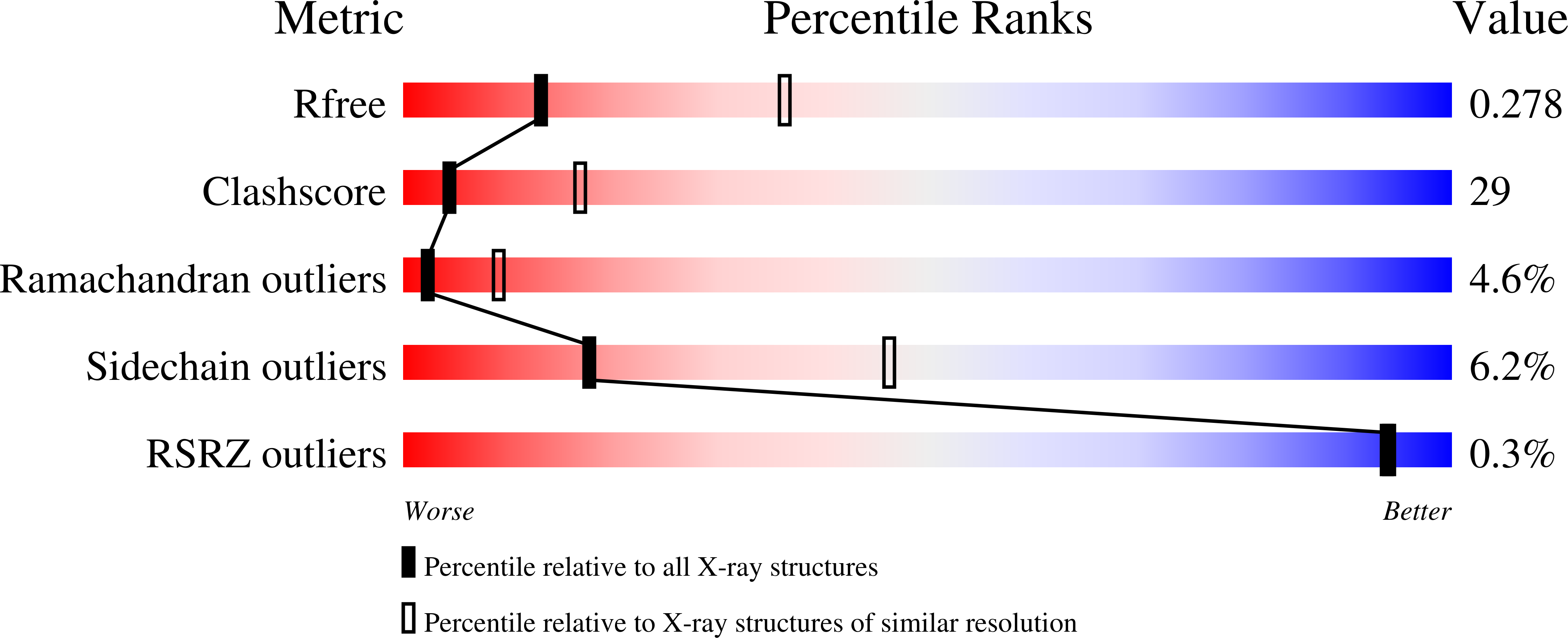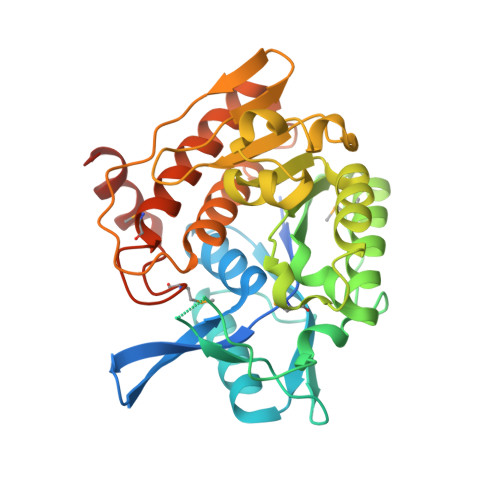Crystal Structure of an Aminoimidazole Riboside Kinase from Salmonella enterica; Implications for the Evolution of the Ribokinase Superfamily
Zhang, Y., Dougherty, M., Downs, D.M., Ealick, S.E.(2004) Structure 12: 1809-1821
- PubMed: 15458630
- DOI: https://doi.org/10.1016/j.str.2004.07.020
- Primary Citation of Related Structures:
1TYY, 1TZ3, 1TZ6 - PubMed Abstract:
The crystal structures of a Salmonella enterica aminoimidazole riboside (AIRs) kinase, its complex with the substrate AIRs, and its complex with AIRs and an ATP analog were determined at 2.6 angstroms, 2.9 angstroms, and 2.7 angstroms, respectively. The product of the Salmonella-specific gene stm4066, AIRs kinase, is a homodimer with one active site per monomer. The core structure, consisting of an eight-stranded beta sheet flanked by eight alpha helices, indicates that AIRs kinase is a member of the ribokinase superfamily. Unlike ribokinase and adenosine kinase in this superfamily, AIRs kinase does not show significant conformational changes upon substrate binding. The active site is covered by a lid formed by residues 16-28 and 86-100. A comparison of the structure of AIRs kinase with other ribokinase superfamily members suggests that the active site lid and conformational changes that occur upon substrate binding may be advanced features in the evolution of the ribokinase superfamily.
Organizational Affiliation:
Department of Molecular Biology and Genetics, Cornell University, Ithaca, NY 14853, USA.

















